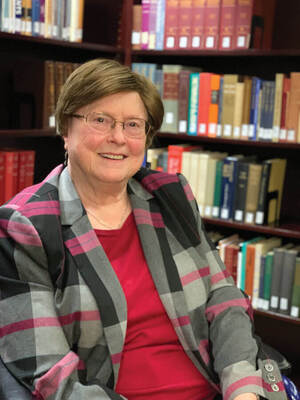
Mary Katherine Tillman was a Newman scholar, writing a book, John Henry Newman: Man of Letters, and several extended commentaries on the works of the 19th-century English convert, priest and cardinal, as well as on the history and philosophy of liberal education.
A professor emerita in the Program of Liberal Studies, Tillman died October 21. She was 81.
Born in St. Louis to parents who were Saint Louis University professors, Tillman earned her doctorate in philosophy from the New School for Social Research. She taught at Rutgers University and Mundelein and Clarke colleges before joining the Notre Dame faculty in 1973, teaching at the University for 33 years and serving as an assistant provost from 1979 to 1982.
Beloved by her students in part for her sharp wit, Tillman taught Great Books seminars and courses on Newman, ethics and metaphysics. She was a charismatic teacher adept at leading students to a thorough understanding of the texts, said Stephen Fallon, the John J. Cavanaugh Professor of the Humanities, who taught a seminar with Tillman soon after he joined the faculty in the 1980s.
“She was a great deflator of pretentiousness,” Fallon said.
Tillman was a recipient of Notre Dame’s Sheedy Award for Excellence in Teaching and the 2019 Gailliot Award for lifetime achievement from the National Institute for Newman Studies. In accepting the latter honor, Tillman said she was “strongly attracted to St. John Henry Newman’s idea of a university, with its ideal of imbibing and loving knowledge for its own sake.”
She is survived by her husband, Phillip Sloan, a professor emeritus in PLS and the History and Philosophy of Science program.
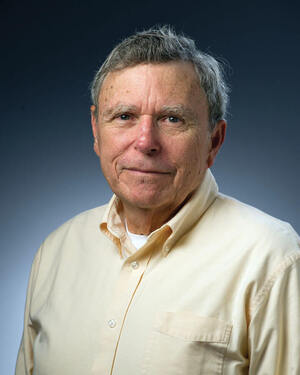
John Roos ’65 once described himself as “sort of a utility player.” In his 44 years at Notre Dame, the professor of political science taught courses in democratic theory, quantitative methods, Thomas Aquinas, ancient and medieval political theory, the American Congress, Catholic political thought and literature, including a class on the political vision of Flannery O’Connor. A favorite academic endeavor was team-teaching the Justice Seminar in what was once the government department.
Leon John Roos Jr. came to Notre Dame in 1961 from Houston, devoted himself to his studies and campus politics and graduated magna cum laude. After earning a doctorate from the University of Chicago, he joined the Notre Dame faculty in 1969.
He brought into the classroom a fervent interest in the workings of political systems and a desire to mentor and infect his students with comparable gusto. He carried “a certain intellectual intensity,” his son, Andrew Roos ’97, recalled, and “took great pride in each student’s learning, development and well-being. He would devour the texts he was teaching with the same curiosity and energy in his last semester as his first.”
“During one of my many meetings with John,” says Ryan Montoya ’96, now a deputy assistant to the president of the United States, “I told him that I wanted to be the next George Stephanopoulos. He paused for a moment — a moment I never forgot — looked up with his beaming smile and said, ‘When I am through with you kid, you will be better.’ And that pretty much sums up my experience with John. . . . Above all else, I believed that I could be better.”
While the scholar’s research focused on political theory, campaign finance and congressional and local government reform, he was also engaged in real-life politics as a campaign adviser, politician’s coach and citizen actively embedded in his own neighborhood and city.
Roos, who died of melanoma in Nashville, Tennessee, on October 21, his 79th birthday, is survived by Carole, his wife of 53 years, and their two children. He is remembered by a classmate for his “compendious knowledge of Notre Dame football,” by his son as a loving grandfather “who took joy in the next generation,” and by another avid collector for his “tenacity as a baseball-card trader.”
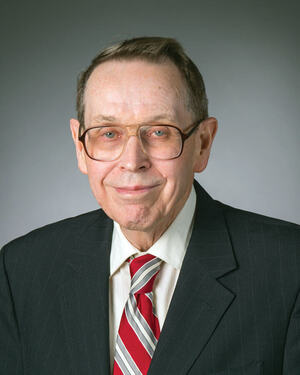
Monsignor John P. Meier devoted his scholarly career to writing about the life of Christ and early Christianity. He used the tools of modern historical research to study Jesus, publishing 18 books during his career, but he is best known for A Marginal Jew: Rethinking the Historical Jesus, an acclaimed five-volume series of books published between 1991 and 2016.
Meier, the William K. Warren Professor of Theology emeritus, died October 18 at age 80.
Born in New York, Meier was ordained to the Archdiocese of New York in Rome’s St. Peter’s Basilica in 1967. He earned a doctorate in sacred scripture at the Biblical Institute in Rome in 1976.
Meier taught at St. Joseph’s Seminary and College in New York and at the Catholic University of America before joining the Notre Dame faculty in 1999. He had already served as president and trustee of the Catholic Biblical Association and general editor of the Catholic Biblical Quarterly and was made an honorary prelate of the Papal Household, or monsignor, by Pope John Paul II in 1994.
The first volume of A Marginal Jew drew an enthusiastic readership. Pope Benedict XVI said it inspired his own series of books about Jesus. Meier was working on a sixth volume about “the titles used by and of the historical Jesus” at the time of his death. He also co-authored Antioch and Rome: New Testament Cradles of Catholic Christianity, named Best Book of 1983 by the Catholic Press Association.
Known for his humor, Meier enjoyed sharing his broad knowledge in areas ranging from wine and opera to popular culture and smartphone apps. He moved to emeritus status in 2018 but continued to teach and write.
He never claimed his interpretation of Jesus was definitive. “What is beyond dispute is that Jesus of Nazareth is one of those perennial questions in history with which mankind is never quite done,” he wrote in The New York Times in 1986. “In a ministry of two or three years he attracted and infuriated his contemporaries, mesmerized and alienated the ancient world, unleashed a movement that has done the same ever since, and so changed the course of history forever.”
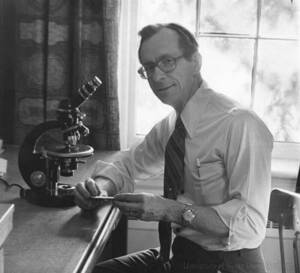
William Fairley, a professor emeritus of earth sciences whose lifelong fascination with maps, rocks and geology swept him from a boyhood in Maine’s north woods to the slopes and summits of the Appalachian and Rocky mountains, died October 9, four days before his 94th birthday.
While working for the map service of the U.S. Army Corps of Engineers, Fairley was drafted into the Marine Corps, where he served during the Korean War as a cartographic draftsman in the intelligence office.
Postwar work in geology led Fairley in 1958 to Notre Dame and the completion of his doctoral studies at Johns Hopkins University in 1962. He taught environmental geology and mineralogy at Notre Dame for 33 years, serving as department chair and an assistant dean in the College of Science before earth sciences became part of the College of Engineering.
Fairley’s research used field mapping and petrographic studies to investigate stratigraphy, structures and metamorphic zones in Precambrian rock, particularly in the Appalachians. He led groups of high school teachers and students into the Black Hills of South Dakota and the Montana Rockies for summer field studies in geology.
He enjoyed traveling, bridge, playing the saxophone and giving his grandchildren informal lessons about theology, history and rocks.
Dolores Fairley, his wife of 50 years, preceded him in death. The couple is survived by two daughters and six grandchildren.
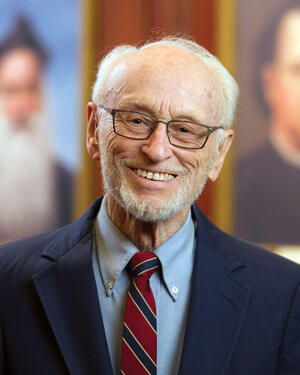
Some years back Kenneth Sayre, an esteemed philosopher who joined Notre Dame’s faculty in 1958, was a visiting professor at Bowling Green State University, where he advised an undergraduate to switch her major from psychology to philosophy — so she could study the philosophy of psychology. “That way,” she recalled him saying, “you can read all the interesting stuff and not have to do the boring stuff.” The student, now a professor, took Sayre’s advice. “I now use this to try to get my own students to switch majors,” she said, adding of the adviser, “He was a wonderful person and a wonderful professor.”
Sayre, a purposeful, erudite and expansive member of the philosophy department for nearly six decades, spent a lifetime doing the interesting stuff. One of the first philosophers to explore artificial intelligence, he founded an institute devoted to studying it in 1965. In the 1970s, he devoted a book to the nation’s voracious and threatening energy appetite and in 2010 published Unearthed: The Economic Roots of our Environmental Crisis, detailing humanity’s impact on the biosphere.
Sayre wrote five of his 14 books, and some two dozen essays, on Plato. He produced numerous articles on the connections between man and machine and about belief and knowledge, information theory, computer software and handwriting recognition. After the Vietnam War, his focus turned toward ethical and social issues. One book, Adventures in Philosophy at Notre Dame, published when Sayre retired in 2014, chronicles the department he served for 56 years.
“Ken was at the leading edge of a cohort of scholars who began to transform the department into the leading center of philosophical work that it is today,” said Paul Weithman ’81, the Glynn Family Honors Professor of Philosophy.
A native of Scottsbluff, Nebraska, Sayre earned his doctorate from Harvard. He was an assistant dean of Harvard’s Graduate School of Arts and Sciences before coming to Notre Dame. He died October 6 at age 94, survived by his widow, Patricia, and four children.
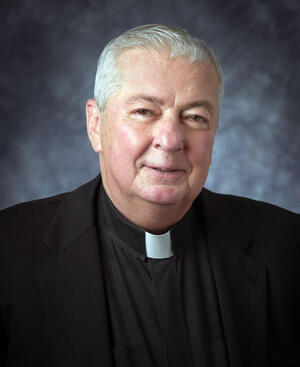
Rev. Richard V. Warner, CSC, ’62 once said Notre Dame should be the place where leaders of the Catholic Church are trained, and he devoted much of his life to making that happen.
A Cleveland native, Warner served as director of Notre Dame’s Office of Campus Ministry from 1989 to 2010, overseeing the school’s faith life. The Holy Cross priest also spent 15 years as counselor to then-president Rev. Edward A. Malloy, CSC, ’63, ’67M.A., ’69M.A., promoting the institution’s Catholic character and acting as a liaison with Church leadership. In the 1980s, the U.S. bishops had invited him to help draft their pastoral letter on nuclear disarmament.
University President Rev. John I. Jenkins, CSC, ’76, ’78M.A. described Warner as “a consummate priest” who was “fiercely loyal to Notre Dame,” with “an abiding love for our students, a love that was richly reciprocated.”
Warner held other influential posts, including being a trustee and fellow of the University, a provincial superior of the Congregation of Holy Cross, a pastoral adviser to the Alliance for Catholic Education and chairman of the board for South Bend’s Center for the Homeless, which he was instrumental in establishing. In 2010, the priest, who had studied theology in Chile and taught there for almost a decade, was elected superior general for the congregation, overseeing the ministry of some 1,500 priests and brothers in 16 countries on five continents, a position he held for six years.
“Father Dick Warner loved the internationalization of Holy Cross and Notre Dame,” said Rev. Austin Collins, CSC, ’77, a professor of sculpture and vice president for mission engagement and Church affairs. “He made everyone feel welcome, whether it was a first-year student, a major benefactor or a CSC from Bangladesh struggling with culture change.
“But his most important role,” Collins said, “was being a Holy Cross religious and serving faithfully and joyfully as a priest. He will always remain for me a true model of generosity and service.” Warner died September 21 at Holy Cross House. He was 83.
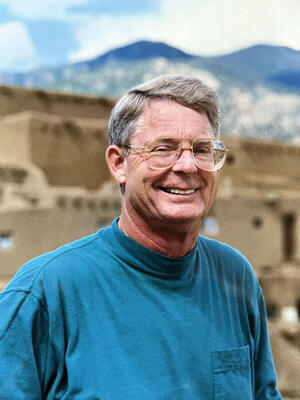
Dean Porter once compared the work of building Notre Dame’s art collection to assembling a jigsaw puzzle. “While you may not have all the pieces,” he wrote in this magazine in 2006, “your appetite is such that you continue the search to complete the picture.”
Porter, director emeritus of the Snite Museum of Art and professor emeritus of art and art history, died September 1. He was 83. Perhaps more than anyone else, he shaped the University’s art offerings to the campus, the community and the world.
Born in upstate New York, Porter trained at the State University of New York at Binghamton. He arrived at Notre Dame in 1966 as curator of the University’s art gallery. Eight years later, he was named its director and soon oversaw the creation of the Snite Museum of Art.
Porter envisioned a preeminent collegiate art collection, a task to which he brought warm personal gifts. He was kind, open-minded and supportive, said Steve Spiro, the museum’s curator emeritus, with whom Porter collaborated for more than 30 years. Porter “had an infectious enthusiasm for the arts,” Spiro said.
Porter’s interests spanned the Middle Ages to the late 20th century. He wrote catalogs, gave campus talks, led tours and arranged lectures by noted artists. He wanted to make art accessible — and the Snite a destination — for everyone.
In 1980, Notre Dame’s collection included more than 12,000 items, mostly prints, drawings and photographs. Today its permanent collection of more than 30,000 works covers Renaissance art, Old Master drawings, European photographs, the George Rickey sculpture archive, Mesoamerican pieces and the decorative arts, earning the Snite recognition among the nation’s outstanding university art museums.
A 1974 trip to Taos, New Mexico, sparked an enduring fascination with the Southwest. Porter helped create the Lunder Research Center, dedicated to the Taos art colony that established the region’s identity as an art mecca. The center’s main gallery is named in his honor.
He was an accomplished artist himself, painting in watercolors and oils inspired by the Southwestern style and showing in more than three dozen solo exhibitions nationwide. His scholarship includes a detailed account of the life of the Indiana-born master Victor Higgins, a prominent early member of the Taos Society of Artists.
Porter led the Snite until 1999 and retired from teaching in 2001. He is survived by his wife, Carol, three daughters and four grandchildren.